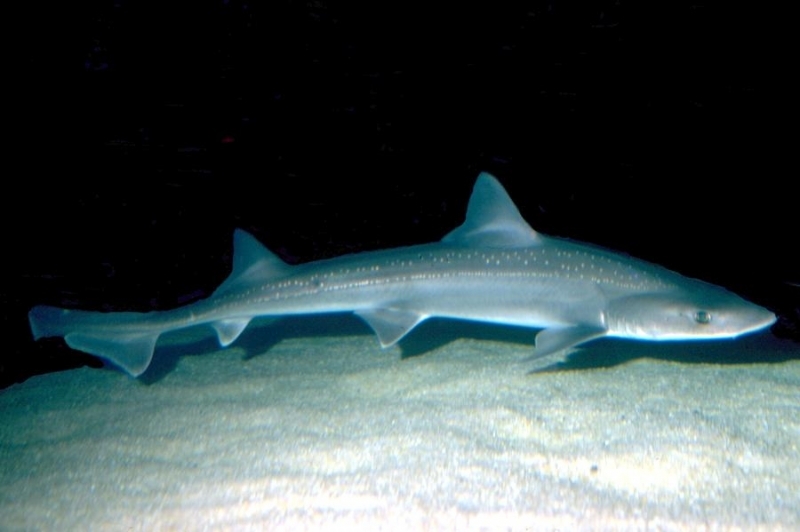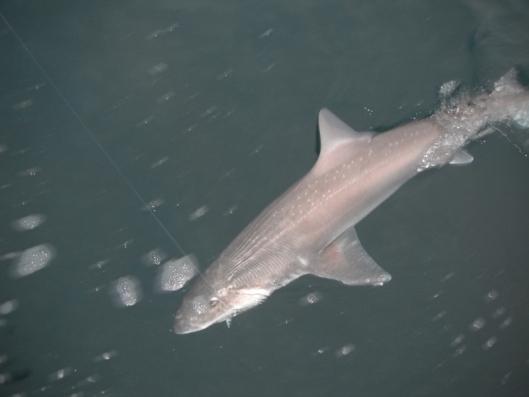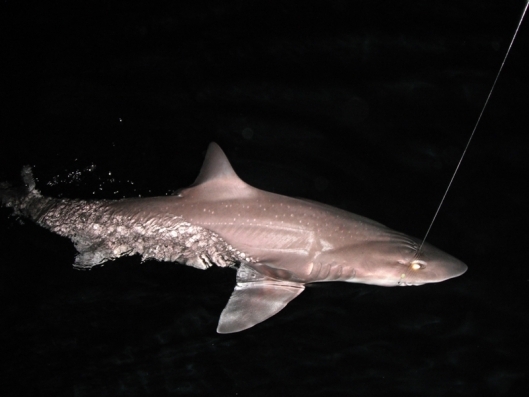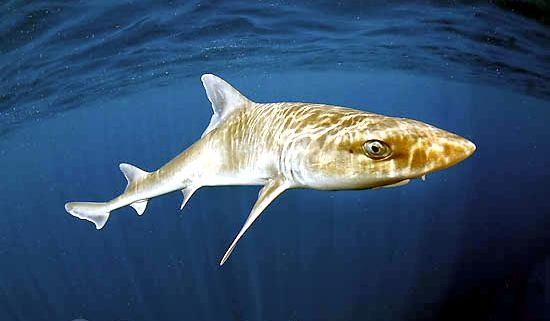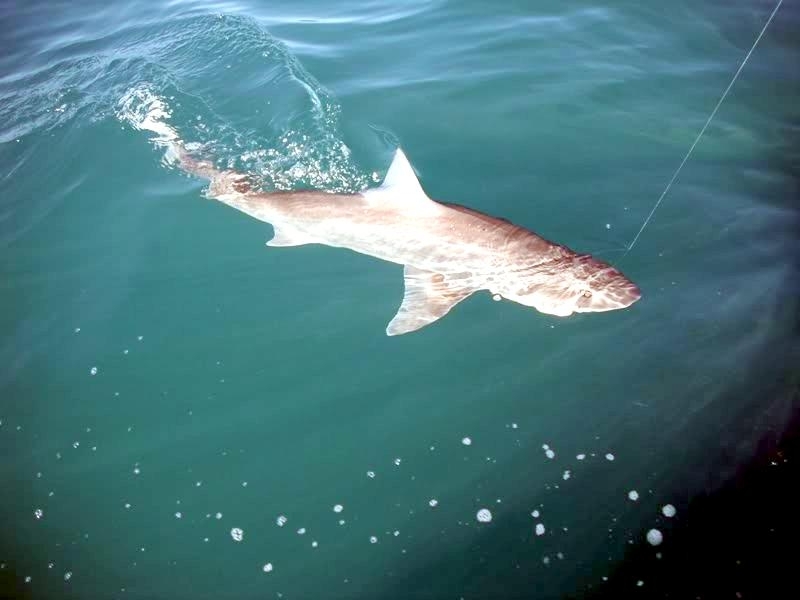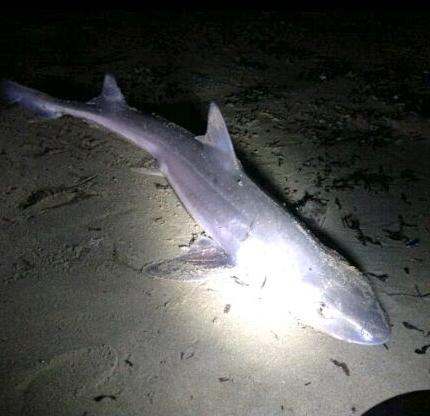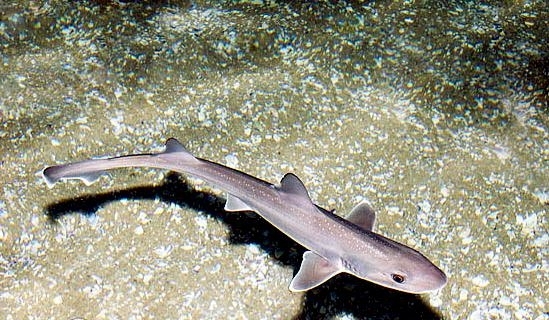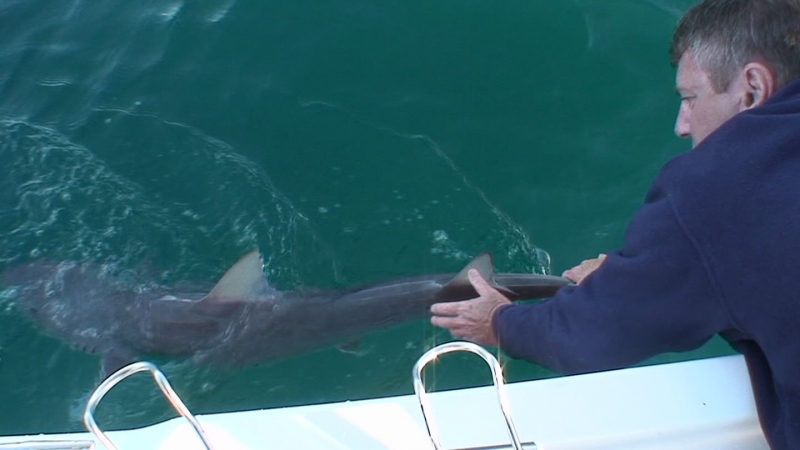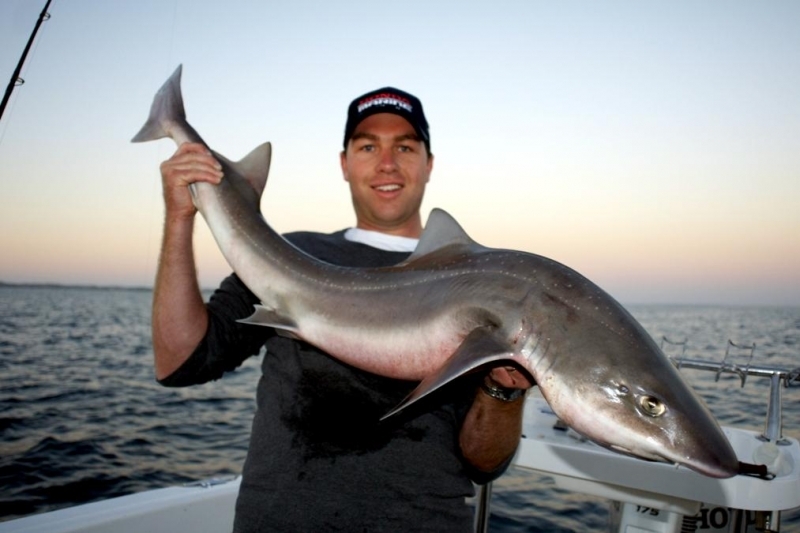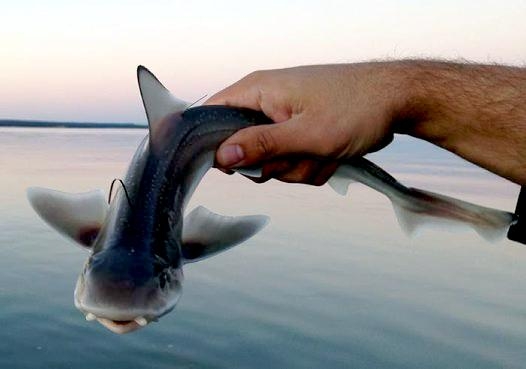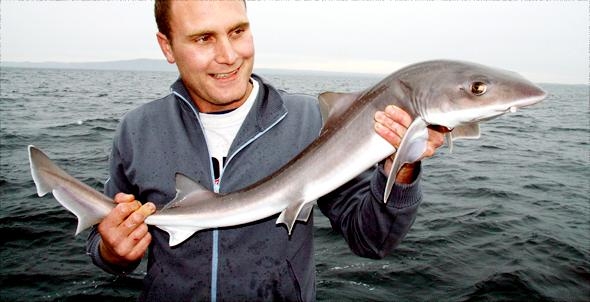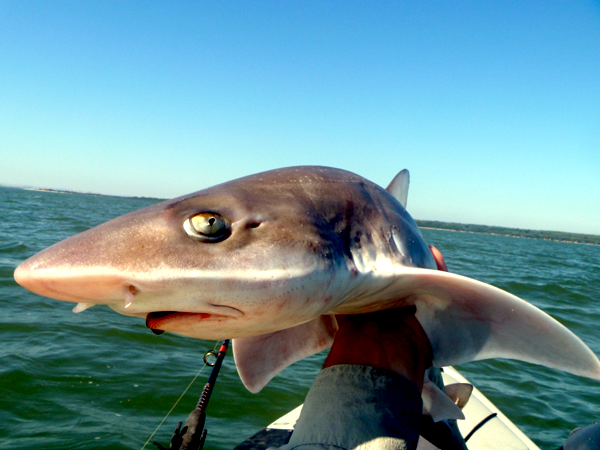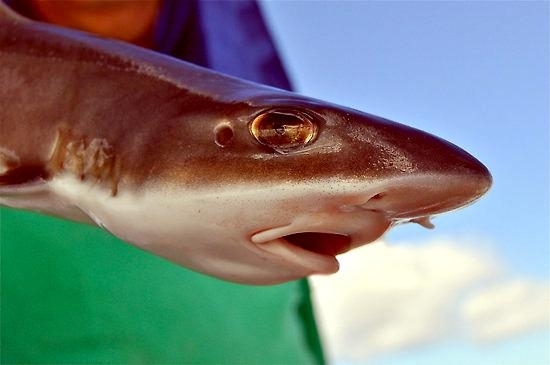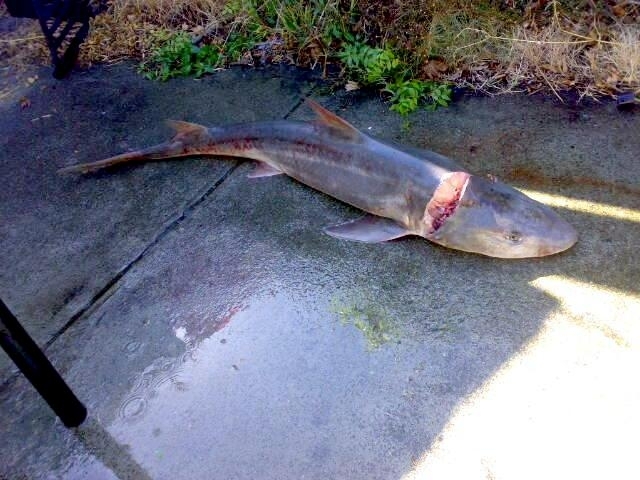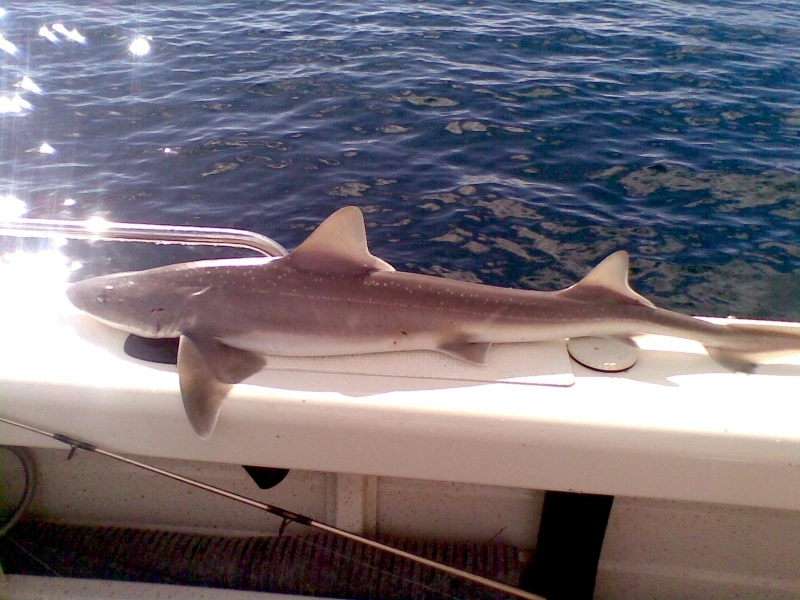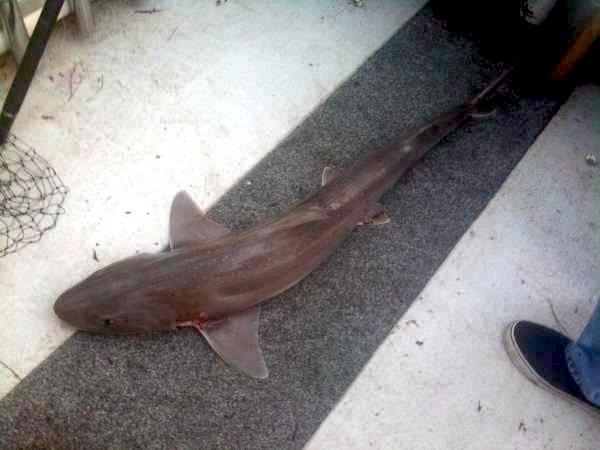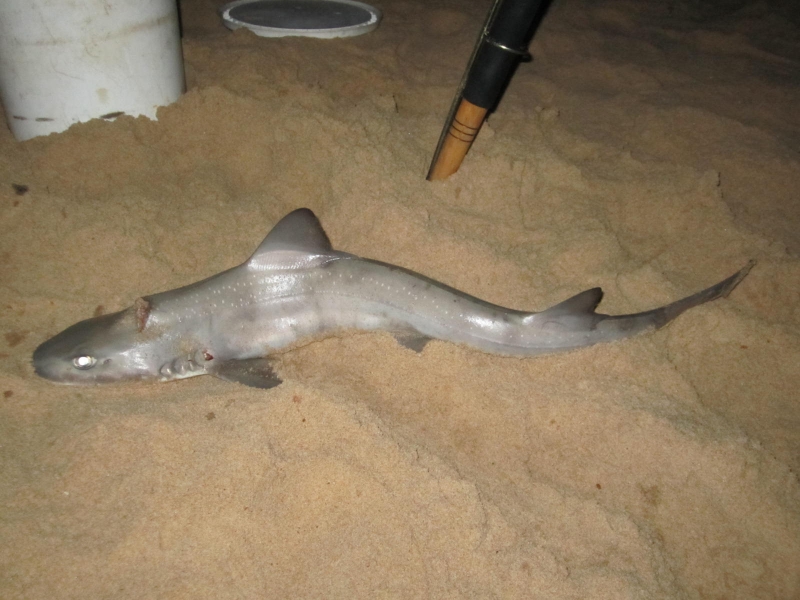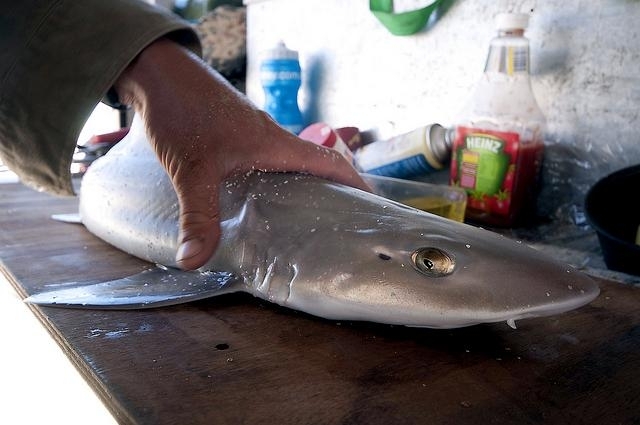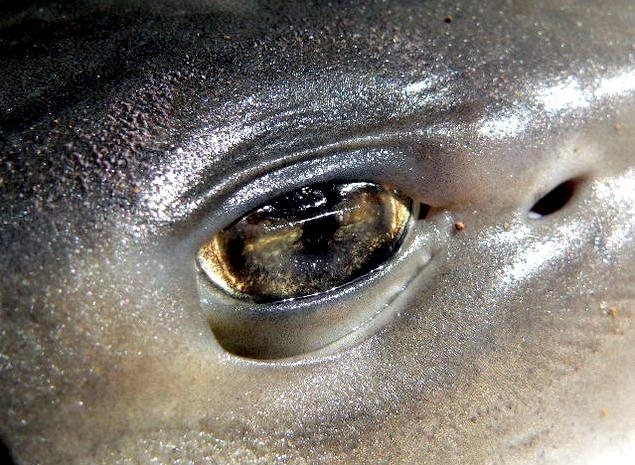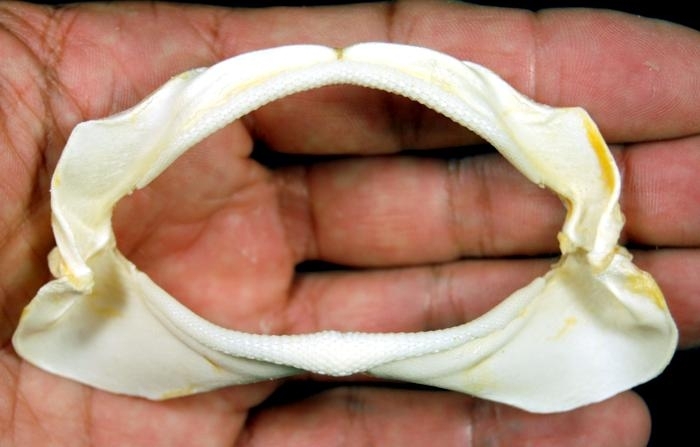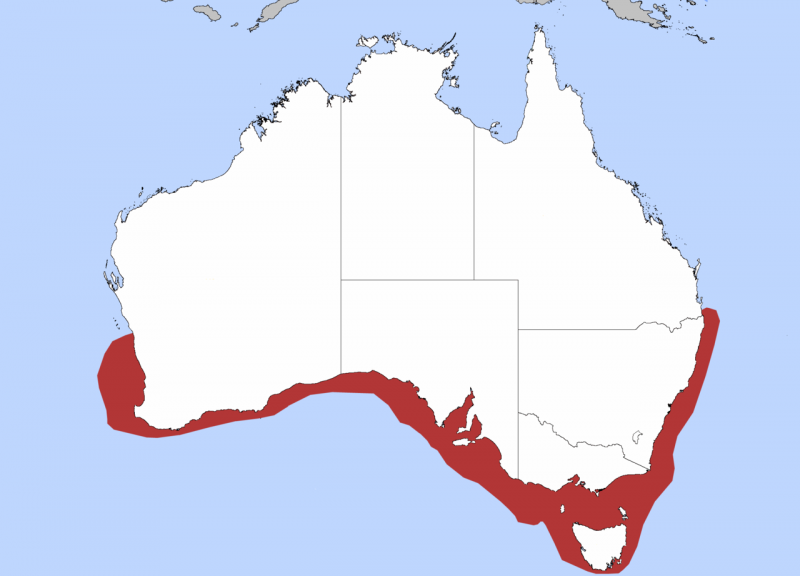“Mustelus antarcticus”
The Gummy Shark is found in the waters of southern Australia. The Gummy Shark gets it name from its teeth that are flat and arranged in a pavement-like pattern. They are a slender with an angular mouth, long upper labial furrows, widely separated nostrils. They have a second dorsal fin nearly as large as the first that lack spines, relatively small pectoral & pelvic fins and a tail with a distinctive notch. It is a slender shark, gray with white spots along its body. They can also be bronze or greenish with a white belly and the characteristic spots. The Gummy Shark measures approximately 157 centimeters long, for males and 175 centimeters for females; in this species the female seems to be larger. This species is not endangered and is cataloged as of “least concern” in the endangered species chart. In the shark family, it belongs to the Trikidae. This type of shark reproduces by oviviparity – when species embryos are in eggs, but they are kept inside the mother until they are ready to hatch. They give birth during the months of October to December. Mothers can give birth to as many as 40 babies known as “pups” with the average being 14 pups. Female Gummy Sharks are pregnant for 12 months. The Gummy Shark eats mostly crustaceans, small fish, squid, octopus & marine worms.
One characteristic of the Gummy Shark is that the second dorsal fin is as big or almost as big as the first fin. The fins are also rounded at the top. It also has whiskers near each nostril. These 2 characteristics differentiate it from school sharks since they tend to look alike and sometimes, fishermen might get the species mixed up due to their close resemblance. This is one reason why the restriction for fishing is 2 fish for both species combined, whether a school fish or a Gummy Shark. Another way is by looking at their teeth; the Gummy Shark has flat teeth while the other species has small sharp teeth. This shark has become popular as cuisine; its meat is known as flake. Australian cuisine benefits from the boneless fillets, which are also great served as fish & chips, a popular and delicious plate. The meat is sweet & delicious and it can be done barbecued, baked, poached or braised. This shark has not been endangered or over-fished due to the restrictions that have been established with only 2 allowed and with a minimum size of 45 centimeters. However, this limit of 2 applies to Gummy Sharks and/or school sharks, whether they are fished whole or as partial carcasses, since Gummy Sharks and school sharks can be found together in the same waters. This has kept the population from being endangered. The Gummy Shark can be found deep as 400 meters and their life span can be as long as 16 years. It seems that the biggest predator of this shark is human. Before the fishing laws & restrictions went into effect, the Gummy Shark was being over-fished due to its meat being so marketable and tasty.

